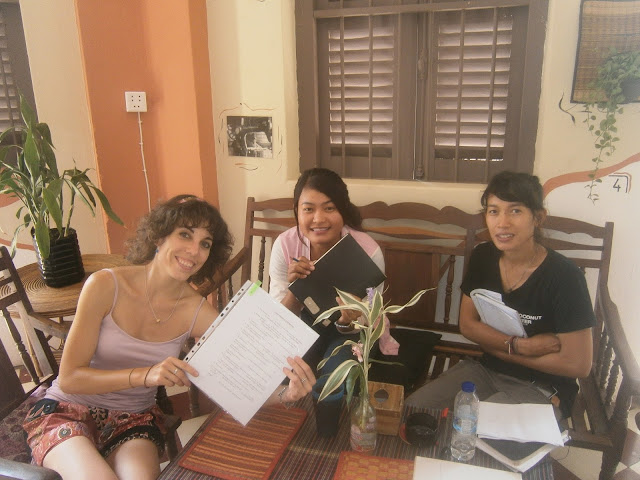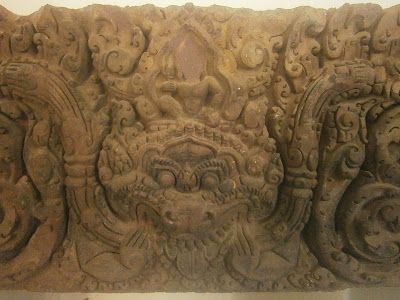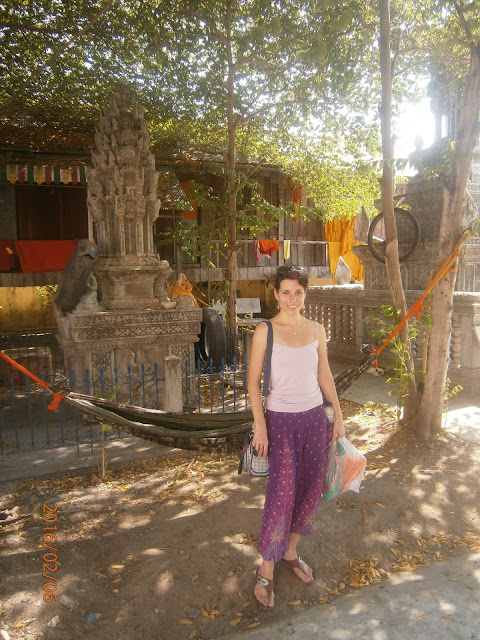Maybe some of you are wondering what exactly do I do at Coconut Water Monday to Friday. Well, here is how I am contributing to the project:
I work 8 to 5. Almost every day I teach one or two hours of English --to the school children and/or to the Coconut Water staff. This means that quite a good bit of my working day I spend planning lessons, looking for suitable handouts, making up games for the kids, and so on. I found out that most of the times it's just easier and quicker to create my own, since the activities need to be adapted to their different language levels and, more specifically, to their culture. It seems that localisation chases me everywhere I go (wink, wink to my work colleagues).
When I teach at the local school, I always go with one of the social educators, since most of the times it's not feasible to deliver the lesson in English only. Especially when learning new grammar, children normally need a brief explanation in their native language. Although they love games, children can be shy, as they are not used to expressing feelings as much as Westerners do, or to represent scenes using body language.
All in all, classes are fun... and with the adults are even funnier! :) With them, I focus on pronunciation and more complex grammar structures, and content is targeted at their own jobs and responsibilities.
 |
| Teaching English at the local school |
When I teach at the local school, I always go with one of the social educators, since most of the times it's not feasible to deliver the lesson in English only. Especially when learning new grammar, children normally need a brief explanation in their native language. Although they love games, children can be shy, as they are not used to expressing feelings as much as Westerners do, or to represent scenes using body language.
All in all, classes are fun... and with the adults are even funnier! :) With them, I focus on pronunciation and more complex grammar structures, and content is targeted at their own jobs and responsibilities.
 |
| English lesson with the staff |
Every day I assist with communication and editorial tasks, which range from drafting short to medium articles for the English version of our website to posting on our Facebook fan page about recent activities and upcoming events. I also help the staff whenever they need me to correct their writing. In general, I gladly take on any writing tasks for which nobody else has the time, like the bi-monthly newsletter -I couldn't help but adopt it.
 |
At the office with the social educators
|
Last but not least, I also lend a hand with ad hoc tasks as needed. We often visit schools and families in the so-called support visits. We are in the process of revamping our fair-trade shop, and I recently changed the design of our billboard to better publicise our restaurant: we got rid of the old-school menu to focus on the social component of the project. Judge by yourselves! I can already tell you that we are getting more attention from customers.
It is also worth-noting that about 15% of my working day goes to patiently overcome bad internet connections and sluggish, overheated computers, including my own -which, to add insult to injury, has the Windows interface in Russian.
 |
| The Coconut family having lunch together |

















































